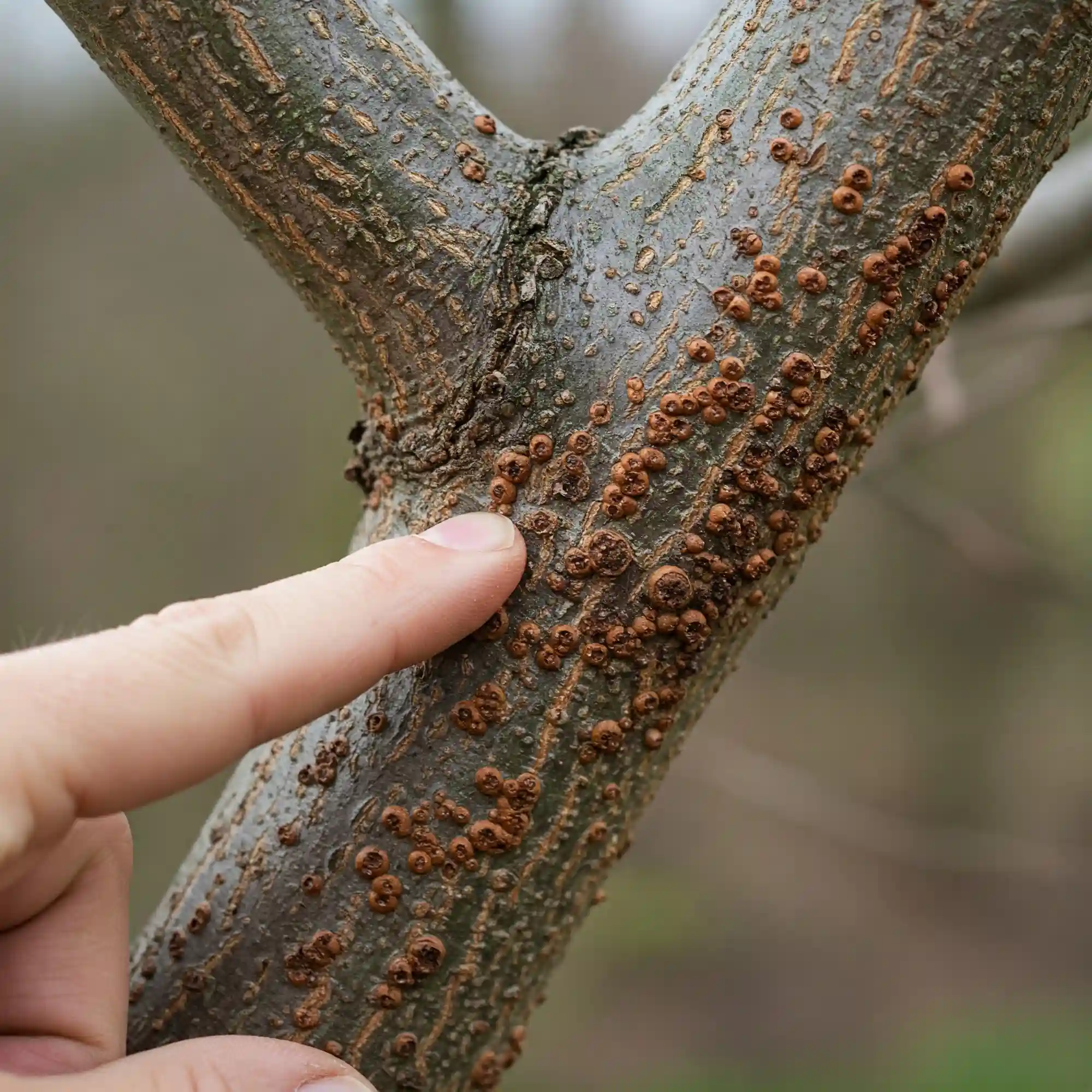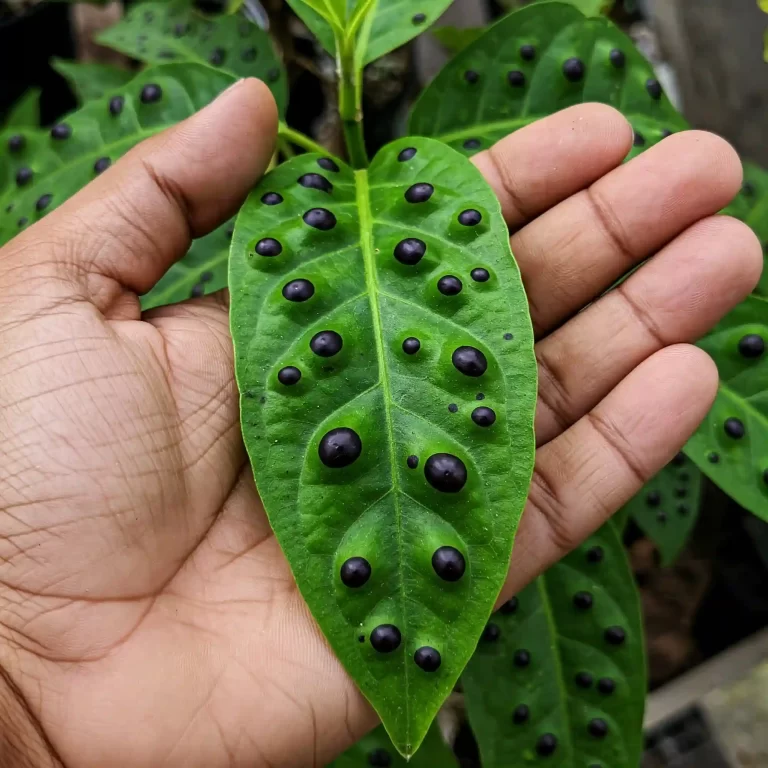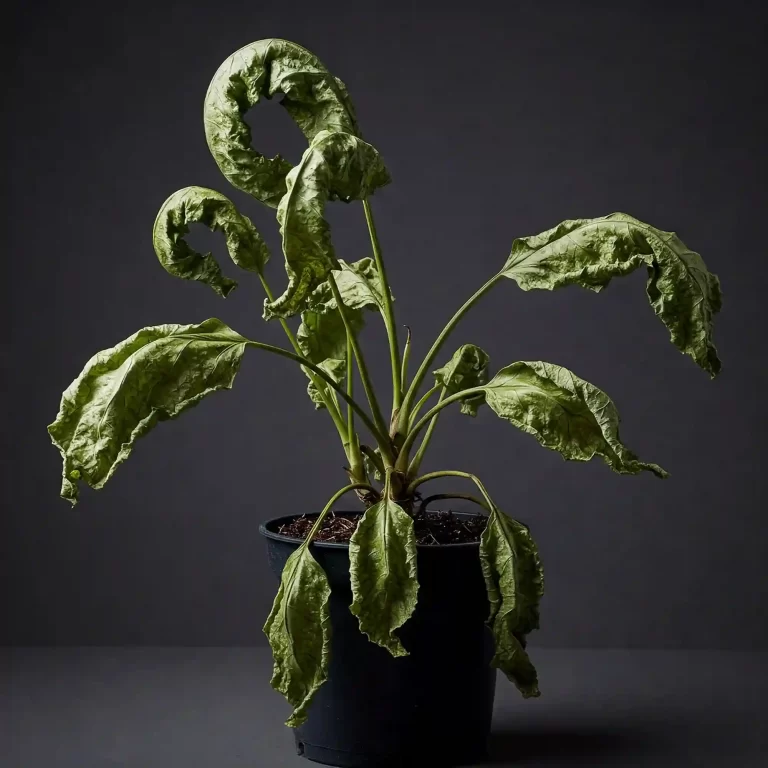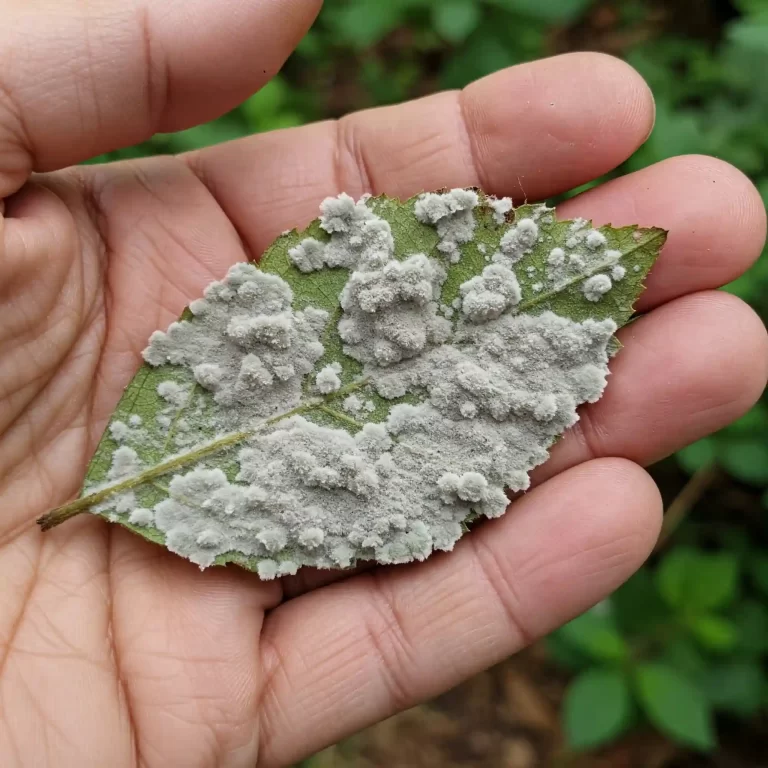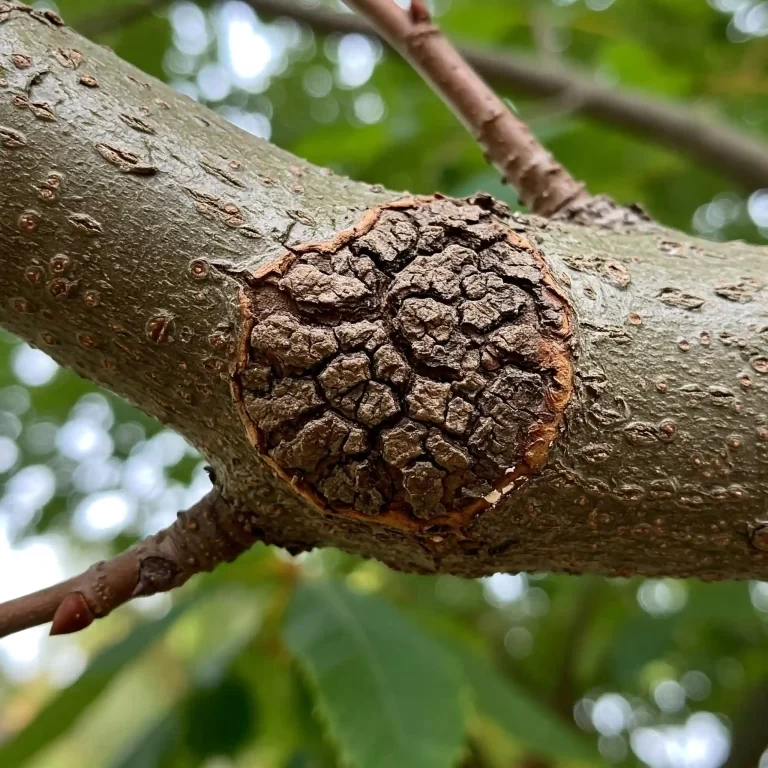Have you ever walked through your garden, only to be met with the sight of wilting leaves, dying branches, and an overall sense of plant distress? It’s a heartbreaking experience, especially when you’ve invested time and care into your green companions. I know that feeling all too well. You might be worried about losing your prized trees or shrubs, and the thought of an uncontrollable disease spreading through your garden can be truly unsettling. But don’t despair! Branch blight, while a serious issue, can often be managed with the right approach. In this comprehensive guide, I’ll share my experience and expertise to help you understand, identify, treat, and – most importantly – prevent branch blight from taking over your garden. From understanding the underlying causes to implementing effective control strategies, I’ll walk you through every step of the process, empowering you to restore your plants to their vibrant, healthy state. Let’s reclaim your garden’s beauty together!
What is Branch Blight?
Branch blight isn’t a single, specific disease, but rather a term used to describe a range of symptoms affecting the branches of trees and shrubs. Essentially, it refers to the dieback or death of branches, often starting at the tips and progressing inward. This can manifest in various ways, from the gradual browning and withering of leaves to the development of cankers (open sores) on the bark.
Think of it like this: Imagine a healthy branch as a vibrant, flowing river. Branch blight is like a dam or blockage, disrupting the flow of essential nutrients and water from the roots to the leaves. This disruption weakens the branch, leading to a gradual decline and ultimately, death.
Understanding the Scope of Branch Blight:
It’s crucial to understand that branch blight isn’t a single, isolated problem. It can be caused by a variety of factors, making accurate diagnosis essential for effective treatment. Some of the common culprits include:
- Fungal Infections: Many fungi, such as Alternaria, Botrytis, Phomopsis, Diplodia, and Fusarium, can infect plant tissues, leading to branch dieback. These fungi thrive in moist conditions and often enter the plant through wounds or natural openings.
- Bacterial Infections: While less common than fungal infections, certain bacteria, including Pseudomonas and Erwinia, can also cause branch blight. These bacteria can invade plant tissues and disrupt their normal functions.
- Environmental Stress: Factors like drought, excessive moisture, frost damage, and nutrient deficiencies can weaken plants and make them more susceptible to disease. These stresses compromise the plant’s natural defenses, allowing opportunistic pathogens to take hold.
- Pest Infestations: While not a direct cause of branch blight, insect infestations can weaken plants significantly. Pests such as borers, scale insects, and aphids can damage the bark and leaves, creating entry points for fungal or bacterial pathogens.
Recognizing the Signs:
The symptoms of branch blight can vary depending on the underlying cause and the type of plant affected. However, some common signs include:
- Dieback: This is the most characteristic symptom of branch blight. Branches and twigs begin to die from the tips inward, often turning brown or black.
- Leaf Discoloration: Leaves may exhibit various color changes, such as browning, yellowing, or spotting.
- Cankers: These are open sores or lesions on the bark of the affected branches. They can vary in size and appearance, but often appear sunken or discolored.
- Wilting: Leaves may droop and appear wilted, even if the plant has received adequate water.
- Defoliation: Premature leaf drop is another common symptom, where leaves fall off the plant before the normal autumn leaf drop.
- Stunted Growth: Plants affected by branch blight may exhibit stunted growth or fail to thrive.
Importance of Early Detection:
Early detection is crucial for successful management of branch blight. The sooner you identify the problem, the better your chances of controlling the disease and preventing further damage to your plants. Regular observation of your trees and shrubs is essential. Look for any unusual symptoms, such as dieback, leaf discoloration, or cankers. If you notice any concerning signs, take action promptly.
In Summary:
Branch blight is a complex issue with various underlying causes. It’s important to remember that it’s not a single disease, but rather a collection of symptoms indicating a problem within the plant’s branches. By understanding the potential causes and recognizing the early warning signs, you can take proactive steps to protect your trees and shrubs from this debilitating condition. In the following sections, we’ll delve deeper into identifying the specific causes of branch blight, exploring effective treatment options, and discussing preventative measures to keep your garden healthy and thriving.
Identifying Branch Blight: Spotting the Signs
Recognizing branch blight in its early stages is crucial for effective management and can significantly improve the chances of saving your affected trees or shrubs. While the specific symptoms can vary depending on the plant species and the underlying cause of the blight, here are some common signs to watch out for:
1. Dieback: This is perhaps the most characteristic symptom of branch blight. It involves the gradual death of branches or twigs, often starting at the tips and progressing inward towards the main trunk. The affected branches may appear brown, gray, or even black, and the leaves on these branches may wither, turn brown, and eventually fall off.
2. Leaf Discoloration: Changes in leaf color can be a strong indicator of underlying problems. Look for: * Browning: Leaves may turn brown or black, often starting at the tips or edges. * Yellowing: In some cases, leaves may yellow before browning and dropping. * Spotting: The leaves may develop spots or blotches of various colors, depending on the specific pathogen involved.
3. Cankers: These are open sores or lesions that develop on the bark of the affected branches. Cankers can vary in size and appearance, but they often appear sunken, discolored, and may even ooze a resin or sap.
4. Wilting: Even if the plant has received adequate water, affected branches or leaves may appear wilted or droopy. This indicates that the plant is unable to transport water and nutrients effectively due to the blockage caused by the blight.
5. Defoliation: Premature leaf drop is another common symptom. Leaves may fall off the plant well before the normal autumn leaf drop, leaving the branches bare and exposed.
6. Stunted Growth: Plants affected by branch blight may exhibit stunted growth or fail to thrive. They may not reach their full potential size or produce as many flowers or fruits as healthy plants.
7. Fungal Growth: In some cases, you may observe visible fungal growth on the affected branches or leaves. This can include powdery mildew, sooty mold, or other fungal structures.
Importance of Regular Observation:
Regularly inspecting your trees and shrubs is essential for early detection of branch blight. Take some time each week to walk around your garden and observe your plants carefully. Look for any unusual symptoms, such as dieback, leaf discoloration, or cankers. Early detection significantly increases the chances of successful treatment and minimizes the damage caused by the disease.
By familiarizing yourself with these common symptoms, you can become a more vigilant gardener and take proactive steps to protect your plants from the devastating effects of branch blight.
Treating Branch Blight: Effective Solutions
Once you’ve identified branch blight in your trees or shrubs, it’s time to take action. The treatment approach will depend on the severity of the infection, the type of plant affected, and the underlying cause of the blight. Here are some effective strategies:
1. Pruning:
- Remove Infected Branches: This is often the most critical step in managing branch blight. Prune out all infected branches and twigs, cutting back to healthy wood. Be sure to sterilize your pruning shears between cuts to prevent the spread of the disease. You can do this by wiping the blades with rubbing alcohol or a solution of one part bleach to nine parts water.
- Proper Pruning Techniques: When pruning, make clean cuts just below the infected area. Avoid leaving stubs, as these can become entry points for further infection.
- Disposing of Infected Material: Do not compost infected branches or leaves. Bag them up and dispose of them in the trash.
2. Fungicide Applications:
- When to Use Fungicides: If fungal pathogens are the primary cause of the branch blight, fungicides can be effective in controlling the disease.
- Choosing the Right Fungicide: Select a fungicide that is specifically labeled for the type of plant you are treating and the identified pathogen. Consult with your local nursery or extension service for recommendations.
- Application Timing: Fungicides are most effective when applied preventively or at the first signs of infection. Follow the instructions on the product label carefully regarding application rates and timing.
- Types of Fungicides: There are various types of fungicides available, including:
- Copper-based fungicides: These are broad-spectrum fungicides that can be effective against a wide range of fungal diseases.
- Systemic fungicides: These fungicides are absorbed by the plant and translocated throughout the plant tissues, providing more systemic protection.
3. Bactericides:
- When to Use Bactericides: If bacterial infections are the cause of branch blight, bactericides may be necessary.
- Choosing the Appropriate Bactericide: Select a bactericide that is specifically labeled for the type of bacteria and the affected plant.
- Application: Follow the instructions on the product label carefully regarding application rates and timing.
4. Cultural Practices:
- Improve Plant Health: Ensuring your plants are healthy and vigorous is crucial for disease resistance. Provide adequate water, fertilize appropriately, and maintain proper soil drainage.
- Maintain Good Air Circulation: Prune plants to improve air circulation around them. This helps to reduce humidity and discourage the growth of fungal pathogens.
- Sanitation: Remove and dispose of fallen leaves and debris around the base of your plants. This helps to reduce the overwintering sites for pathogens.
5. Other Considerations:
- Consult with a Professional: If you are unsure about the diagnosis or treatment of branch blight, consult with a certified arborist or a plant pathologist. They can provide expert advice and recommend the most appropriate course of action.
- Patience is Key: Treating branch blight may take time and patience. It may take several seasons to see significant improvement in the health of your plants.
By implementing these treatment strategies and following the recommended practices, you can effectively manage branch blight and restore the health and vitality of your trees and shrubs. Remember, early detection and prompt action are key to successful treatment.
Preventing Branch Blight: Proactive Plant Care
While treatment methods can help manage existing branch blight infections, the best approach is always prevention. By implementing proactive plant care practices, you can significantly reduce the risk of your trees and shrubs succumbing to this debilitating disease. Here are some key strategies:
1. Choose Resistant Varieties:
- Research Plant Varieties: When selecting new plants for your garden, choose varieties that are known to be resistant or tolerant to common branch blight pathogens. Consult with your local nursery or extension service for recommendations.
- Consult with Experts: Seek advice from experienced gardeners, arborists, or plant pathologists to identify the most suitable and disease-resistant varieties for your specific climate and growing conditions.
2. Proper Watering:
- Avoid Overwatering: Overwatering can create conditions that favor fungal growth. Ensure that your plants have adequate drainage to prevent waterlogging.
- Water Deeply and Infrequently: Water deeply and infrequently to encourage deep root growth. This helps plants withstand periods of drought and reduces the risk of fungal infections.
- Water at the Base of the Plant: Avoid wetting the foliage, as this can increase the risk of fungal diseases.
3. Fertilize Appropriately:
- Provide Essential Nutrients: Fertilize your plants with a balanced fertilizer to ensure they receive the essential nutrients they need for healthy growth.
- Avoid Over-fertilization: Over-fertilization can weaken plants and make them more susceptible to disease. Follow the recommended fertilizer rates and application schedules.
4. Maintain Good Air Circulation:
- Prune Regularly: Prune your plants regularly to improve air circulation around them. This helps to reduce humidity and discourage the growth of fungal pathogens.
- Thin Out Dense Plantings: If your plants are overcrowded, thin them out to allow for better air circulation and sunlight penetration.
5. Sanitation Practices:
- Remove Fallen Leaves and Debris: Regularly remove fallen leaves, twigs, and other debris from around your plants. This helps to reduce the overwintering sites for pathogens.
- Disinfect Pruning Tools: Disinfect your pruning shears between cuts to prevent the spread of disease. You can do this by wiping the blades with rubbing alcohol or a solution of one part bleach to nine parts water.
6. Monitor Your Plants Regularly:
- Regular Inspections: Regularly inspect your plants for any signs of disease, such as dieback, leaf discoloration, or cankers. Early detection is crucial for successful management of branch blight.
- Act Promptly: If you notice any concerning symptoms, take action promptly to address the issue.
By implementing these proactive plant care practices, you can significantly reduce the risk of branch blight and maintain the health and vitality of your trees and shrubs. Remember, prevention is always better than cure.
FAQ: Answering Your Branch Blight Questions
Branch blight can be a perplexing issue for gardeners. To help you navigate this challenge, I’ve compiled a list of frequently asked questions and provided comprehensive answers:
1. How to identify branch blight on my oak tree?
Oak trees are susceptible to various forms of branch blight. Some common signs to look for include:
- Dieback: Observe if branches are dying back from the tips, with leaves browning and withering.
- Cankers: Inspect the bark for sunken, discolored areas, which are characteristic of canker diseases.
- Leaf Discoloration: Look for unusual leaf colors, such as browning, yellowing, or the development of leaf spots.
If you suspect branch blight on your oak tree, it’s best to consult with a certified arborist or a plant pathologist for accurate diagnosis and treatment recommendations.
2. What are the early signs of branch blight on my azalea?
Azaleas are particularly susceptible to certain types of branch blight. Some early warning signs to watch for include:
- Wilting: Observe if the leaves of your azalea are wilting, even though the plant has received adequate water.
- Leaf Spotting: Look for the development of brown or black spots on the leaves.
- Dieback: Monitor for dieback of individual branches or twigs.
Early detection is crucial for effective management of branch blight on azaleas.
3. Is my maple tree dying from branch blight or something else?
While branch blight can affect maple trees, it’s important to consider other potential causes for dieback and leaf discoloration. Some other possibilities include:
- Verticillium Wilt: This fungal disease can cause similar symptoms to branch blight in maple trees.
- Anthracnose: Another fungal disease that can affect maples, causing leaf spots and dieback.
- Insect Infestations: Certain insects, such as borers, can weaken trees and make them more susceptible to disease.
If you’re unsure about the cause of your maple tree’s decline, consulting with an arborist or a plant diagnostic lab is recommended.
4. How can I tell if it’s branch blight or just normal dieback?
Differentiating between branch blight and normal dieback can be challenging. Here are some key distinctions:
- Extent of Dieback: Normal dieback often affects only a few branches and may be caused by environmental factors like drought or winter injury. Branch blight, on the other hand, tends to spread more rapidly and affect multiple branches.
- Presence of Cankers: Cankers on the bark are a strong indicator of branch blight. Normal dieback may not be associated with canker formation.
- Other Symptoms: Look for other symptoms, such as leaf discoloration, wilting, or fungal growth, which can help pinpoint the specific cause.
5. Best treatment for branch blight on my fruit tree?
Treating branch blight on fruit trees often involves a combination of strategies:
- Pruning: Prune out infected branches, cutting back to healthy wood.
- Fungicide Application: Apply a fungicide labeled for use on fruit trees and the specific pathogen involved. Consult with your local extension service for recommendations.
- Cultural Practices: Improve plant health by providing adequate water, fertilizing appropriately, and maintaining good air circulation.
6. How to prevent branch blight from spreading to other plants?
Several practices can help prevent the spread of branch blight:
- Sanitation: Remove and dispose of fallen leaves and debris from around your plants.
- Disinfect Pruning Tools: Disinfect your pruning shears between cuts to prevent the spread of pathogens.
- Isolate Infected Plants: If possible, isolate infected plants from healthy ones.
7. What are the preventative measures for branch blight on trees?
Proactive measures can significantly reduce the risk of branch blight:
- Choose Resistant Varieties: Select tree varieties that are known to be resistant or tolerant to common branch blight pathogens.
- Proper Plant Care: Provide adequate water, fertilize appropriately, and maintain good air circulation.
- Monitor Regularly: Regularly inspect your trees for any signs of disease and take action promptly if you notice any issues.
By addressing these frequently asked questions and implementing the recommended practices, you can effectively manage branch blight and maintain the health and vitality of your trees and shrubs.
Conclusion: Keeping Your Garden Thriving
Branch blight can be a frustrating challenge for any gardener, but by understanding its causes, recognizing its symptoms, and implementing effective management strategies, you can protect your trees and shrubs and ensure a thriving garden. Remember, early detection is key. Regularly inspect your plants for any signs of distress, and don’t hesitate to seek expert advice if you’re unsure about the diagnosis or treatment.
By combining proactive plant care with timely interventions, you can overcome branch blight and enjoy the beauty and benefits of a healthy, vibrant garden.
Key Takeaways:
- Branch blight is a symptom, not a single disease, caused by various factors such as fungal and bacterial infections, as well as environmental stress.
- Recognizing the early signs of branch blight, such as dieback, leaf discoloration, and cankers, is crucial for effective management.
- Treatment strategies include pruning infected branches, applying fungicides or bactericides (when appropriate), and improving plant health through proper watering, fertilization, and sanitation.
- Prevention is key. Choose disease-resistant varieties, provide optimal growing conditions, and practice good sanitation to minimize the risk of branch blight.
I hope this comprehensive guide has equipped you with the knowledge and tools to effectively manage branch blight in your garden. Remember, with a little care and attention, you can overcome this challenge and enjoy the beauty and tranquility of a thriving green space.
